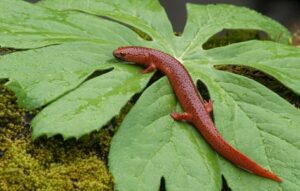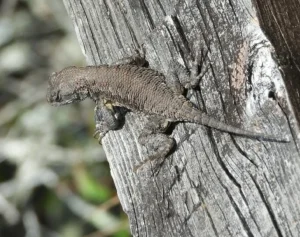They both crawl on four legs, they both have long tails, and they both love warm, damp places. But despite all that, salamanders and lizards are not the same thing.
No, salamanders are not lizards, they’re amphibians, not reptiles. That might sound like a small difference, but it’s actually huge. These two animals come from completely different branches of the animal kingdom and live very different lives.
What Makes Salamanders Different From Lizards?
At first glance, they can look almost identical. But the more you look, the more differences you’ll notice.
Salamanders are amphibians, just like frogs and toads. They hatch from eggs laid in water, breathe through gills or skin, and often spend part of their life in the water and part on land.

Lizards are reptiles, like snakes and turtles. They hatch from leathery eggs on dry land, breathe with lungs their whole life, and are covered in dry, scaly skin.

So even if their body shapes look similar, everything about how they grow, live, and survive is different.
How to Tell Them Apart
There are a few simple ways to spot the difference:
- Skin: Salamanders have smooth, moist skin. Lizards have dry, scaly skin.
- Eggs: Salamanders lay soft, jelly-like eggs in water. Lizards lay leathery eggs on land.
- Breathing: Many salamanders breathe through their skin or gills. Lizards use lungs.
- Young: Salamanders often start as aquatic larvae. Lizards hatch looking like mini adults.
- Habitat: Salamanders stick close to moisture. Lizards can handle drier environments.
So if you see a creature crawling out of a pond or hiding under a wet log, chances are it’s a salamander, not a lizard.
Why Do People Mix Them Up?
Mostly because they look alike, especially species like newts or slender salamanders that have long toes and dry-looking skin.
Some salamanders can even drop their tail to escape danger, just like lizards do. But this is a case of convergent evolution, when two very different animals end up looking similar because they live in similar ways.
They didn’t come from the same ancestors. They just solved some of the same problems in similar ways.
Are Salamanders Cold-Blooded Like Lizards?
Yes, they are. Both lizards and salamanders are cold-blooded, or ectothermic. That means they rely on their surroundings to warm up or cool down.
But the way they handle heat is very different. Lizards often bask in the sun, soaking up warmth. Salamanders avoid the sun completely. Their skin would dry out if they stayed in the heat too long.
Instead, salamanders hide in damp places (under rocks, logs, or deep in leaf litter) where it stays cool and moist.
Do Lizards and Salamanders Live in the Same Places?
Sometimes, yes. In the southeastern U.S., for example, it’s possible to find green anoles (a type of lizard) and spotted salamanders in the same backyard.
But they’re probably not using the same parts of the environment.
Lizards tend to stay out in the open, climbing trees, sunning themselves on walls, or running across dry ground.
Salamanders prefer cool, shaded areas with moisture, like under wet rocks, rotting logs, or inside muddy crevices. If it’s dry or sunny, they won’t come out.
Do They Eat the Same Things?
They do share a taste for bugs.

Both salamanders and lizards eat things like:
- Worms
- Crickets
- Beetles
- Small insects
But how they catch food is a little different. Salamanders often rely on smell and quick tongue strikes. Lizards are more likely to chase or stalk their prey using sight.
Some lizards also eat fruit or plants, while salamanders stick to meat.
Can Salamanders and Lizards Live Together?
In captivity, it’s not a good idea. Even though they eat similar food, their care needs are very different.
Lizards like warmer, drier setups. Salamanders need cool, moist enclosures with plenty of hiding spots.
Putting them together could stress one or both. One might even try to eat the other if the size difference is big enough.
In the wild, they mostly ignore each other. A salamander might hide while a lizard basks just a few feet away.
Do Salamanders Evolve Into Lizards?
Nope. They’re on separate evolutionary paths.
Salamanders are more closely related to frogs than they are to any reptile. They’ve been around since before the dinosaurs and haven’t changed much in millions of years.
Lizards evolved from ancient reptiles and have gone on to become one of the most diverse reptile groups on the planet.
So while both are fascinating and ancient, they’re very much not related in any direct way.
Conclusion
At a glance, it’s easy to confuse a salamander for a lizard. But once you know what to look for, the differences are pretty clear.
No, salamanders are not lizards, they’re amphibians, and they live very different lives.
They may both crawl low to the ground and snack on bugs, but their skin, their babies, their habitats, and their biology all tell a different story. One is built for moist, hidden worlds. The other for sun, sand, and open spaces.
So the next time you spot a sleek, wiggly creature in your yard, take a closer look. If its skin is soft and damp, you’ve just met a salamander, not a lizard in disguise.
Hi, my name is Ezra Mushala, i have been interested animals all my life. I am the main author and editor here at snakeinformer.com.

